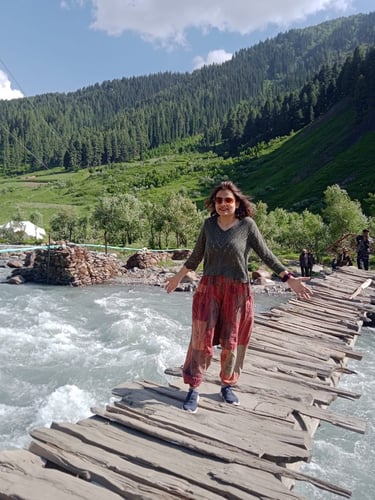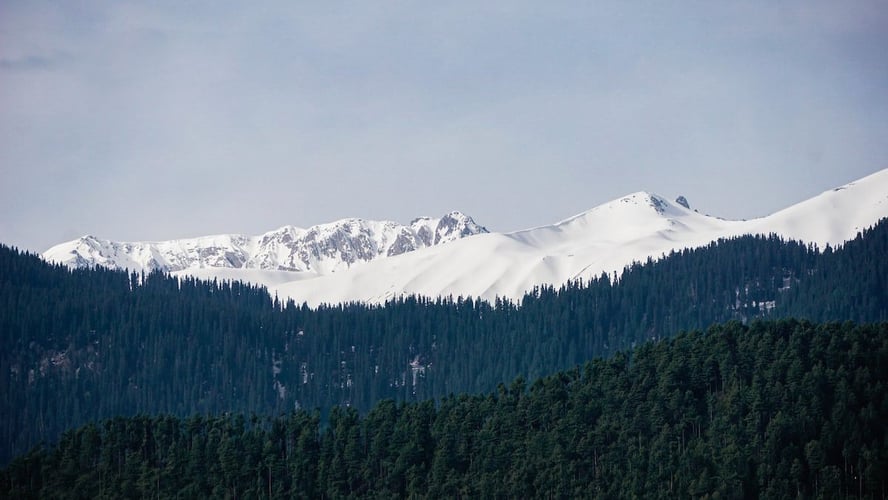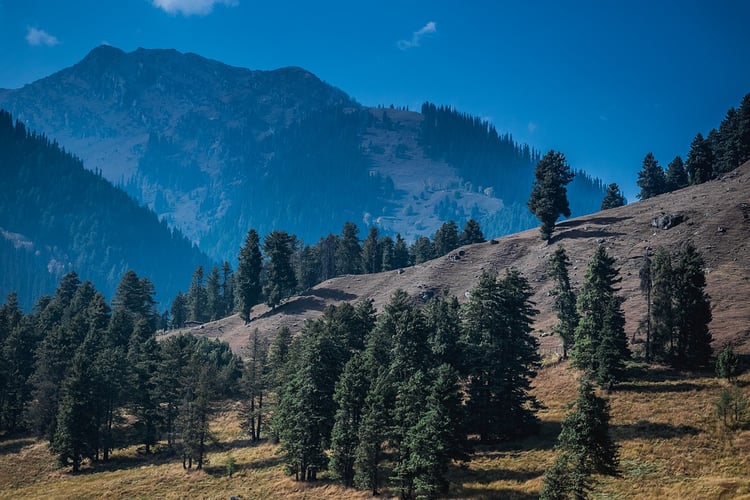How to Pack for a Kashmir Trip
Kashmir’s name springs romantic images of ice-fed glaciers slowly seeping into the fertile earth of the valley, snow-kissed mountains standing tall, emerald meadows with vibrant blooms, and glittering rivers blessed with trout, in a joyful union with houseboats, Shikara rides, galloping ponies, and adventurous skiing. Brimful of natural magnificence, history, heritage, and tradition, it was aptly coined ‘Paradise on Earth,’ by Mughal emperor Jehangir, in the 17th century. His words ring true to this date.
Falling in the strategically located Union Territory of Jammu and Kashmir, the dispute over the Kashmir region has been a matter of intense conflict, and international debate for over seven decades, leading to three wars with India’s neighbour, Pakistan. However, several peace measures and advances have been executed by both nations, although tensions do erupt periodically. Miraculously, Kashmir’s raw brilliance remains intact despite its past struggles.
Brief History: Kashmir means ‘land desiccated from water.’ According to legend, Kashyapa, a Vedic sage, recblalaimed the land of Kashmir from an enormous lake, with the region being called Kashyapamar and, later, Kashmir. It was a prominent centre of Hindu culture till the 14th century, following which it fell under Mughal rule for five centuries, concluding with the rule of the Dogra empire, under the aegis of the British, before merging with India through an Instrument of Accession, in October 1947.
Seasons of Splendour
Kashmir sparkles throughout the year with majestic grandeur offering myriad experiences through the calendar seasons. Whether one chooses to visit in spring, summer, autumn, or winter, unblemished beauty abounds. With temperatures varying across the months, it becomes prudent to pack accordingly for a trip to Kashmir.
Spring: The Season of Joy
Beginning in March, with a ‘spring’ in one’s step, new seedlings peeping out of the ground, flower-bedecked gardens, and vales, it is a time for revelry after a harsh winter. The blooms on almond trees in the historical Badamwari Garden in Srinagar district, unofficially herald the jubilant spell of spring till the end of April. In previous times, locals used to collect blossoms of almonds and thread them together with the help of a thread and needle to make badam malahs, or garlands, and store them in their homes for later use to add the flowers to Kashmiri tea or kahwah. The aromatic fragrance of almond blossom conjures many memories for the people in Kashmir.
Temperatures remain comfortable and above 10 degrees Celsius. The days are warm with mornings and evenings being cooler. The pleasant climate births fruit orchards and a colourful assortment of flowers such as roses, tulips, daisies, lilies, and hyacinths. The Indira Gandhi Memorial Tulip Garden, on the foothills of Zabarwan Mountain, overlooking the Dal Lake, is thronged by visitors who long to witness rows upon rows of bright-hued tulips.
What to Pack for the Season:
- Carry cotton clothes as the days tend to get warm.
- Light woollens, full-sleeved shirts, light sweaters, or jackets.
- A cap or hat for strong, sunny days.
- Comfortable walking sneakers.
- A thermal water bottle to retain temperature.
Summer: A Cornucopia of Colour
Summer arrives with miles and miles of mustard fields in Pahalgam adorned with beds of dainty yellow flowers, the fragrant scents of apricot and cherry trees in Harwan and Srinagar, and meadows upon meadows of blooms in Gulmarg blazing with colour. Vibrant shades of florets flutter in the summer breeze, making scenic drives through the valley a visual treat. Kashmir is at its prismatic best in this season, with clear skies and streams, and an abundance of ripened organic products.
The season witnesses a gradual rise in temperature from May, lasting till August, with some rainfall. The days tend to get hot and humid – July is the hottest month – especially in the plains with the mercury hovering at 30 degrees Celsius. The hilly areas, however, remain deliciously cool due to the pleasant mountain air, and the temperate water bodies which further lower temperatures in the districts.
Summertime also means blissful shikhara rides over the placid length of Dal Lake, and leisurely evening walks in the blooming Mughal gardens. It is a season marked by significant festivals, the Gurez Festival being one such celebration. Located about 120 kilometres from the capital city of Srinagar, Gurez is situated at 8000 feet with stunning views of the vivid Gurez Valley and the Neelum River. A two-day festival highlighting the exquisite culture of the region, it involves stalls of cuisine and handicrafts, musical shows, and art competitions with sports activities such as river rafting. It is also a time to socialise bringing diverse communities together.
Planning a holiday to Kashmir in summer can be a bit of a gamble due to the sudden spurts of rain and the humidity in the afternoons. However, being armed with the correct packing gear is key for a memorable trip.
What to Pack for the Season:
- Carry linen and khadi clothes as the days are hot.
- Light woollens for the evenings, especially if travelling to higher regions.
- A good quality sunblock.
- Carry a pair of sunglasses and a hat for sunny afternoons.
- Rain protective gear such as umbrellas, raincoats, and waterproof bags.
- A water bottle.
- Comfortable walking sneakers for exploring the region.
- Insect repellent.
Autumn: Blazing Shades and Bountiful Reaps
The transition from summer to autumn is a spectacular time in Kashmir with the deep green leaves slowly turning to a fiery reddish-orange, glistening golden, and then an earthy brown, before finally falling on the ground. The Kashmiri ground resembles a scarlet, amber, and gold-speckled leaf blanket neatly sewn together. With a chilly nip in the air, walks in the countryside with bouin or Chinar trees, dotted along long stretches and the sound of rustling leaves create a blissful aura of serenity and splendour. Autumn is also reminiscent of harvest and one can spot huge paddy stacks drying on the sides of the fields.
Driving towards South Kashmir to Pampore, rich purple-tinted saffron fields, blooming in all their glory, greet travellers jubilantly. Although similar fields can be found all over Kashmir, Pampore boasts of the best variety of saffron as its soil and climate are perfectly suited for its cultivation. Driving further up towards Baramulla or Badgam, towering walnut trees stand majestically with their seeds being readied to be harvested. The dried akhrots or walnuts are knocked down from the trees, falling with a loud thud, and then cracked open. Often villagers run with large bags under walnut trees to catch them as they fall and the shelling process is carried out manually,as becoming a family event, over endless cups of steaming kahwah and gossip! The Shopian and Sopore areas are painted with an extra splash of red with dozens of cartons of apples being transported to the mandi or wholesale market, with background sounds of water splashing over pebbles in flowing streams.
The temperature ranges between 12 to 15 degrees Celsius from September to mid-November with misty mornings and evenings, and mildly bright, warm days. The picture-postcard loveliness of Kashmir is best experienced in this season.
What to Pack for the Season:
- Light sweaters or jackets.
- Woollen and full-sleeved shirts and socks.
- Sunscreen lotion, especially for the upper regions, to avoid sunburn.
- Comfortable walking shoes.
- A thermal water bottle.
Winter: White Wonderland
Late November to February marks heavy snowfall with freezing temperatures often tipping at minus 4 degrees Celsius at night. Engulfed in snow, Kashmir is clad in pristine white with sweeping views of silvery meadows, the ice-clad Pir Panjal Mountain range, semi-frozen pine trees with a tiny hint of green peeping through, and frosty lakes bouncing with the sun’s reflection. Misty mornings and evenings sandwich bright afternoons taking some bite out of the cold.
The coldest part of the year starts from the 21st of December till the end of January. This period is often called Chillai Kalan or ‘forty days of intense cold,’ followed by Chillai Khurd or ‘small cold’ for 20 days, and finally Chillai Bachha, fondly cited as ‘baby cold’ for 10 days, till the end of February. Chillai Kalan holds pivotal significance as the snowfall during this period freezes for a greater length of time, restocking the source of the water bodies of Kashmir.
Skiing is the great call of Kashmir in winter. The ski resorts of Gulmarg are world-renowned with the powdery slopes of Apharwat frequented by avid skiers, and the Gondola – Asia’s highest cable car – teeming with travellers. Sonamarg is the second less-crowded option for skiing in Kashmir, with sub-zero temperatures. Winter is also a time to explore daunting white trails such as Liderwat in Aru Valley. Trudging through fresh snow, sometimes two feet deep, with a constant risk of avalanches, is a small sacrifice for the unparalleled view with touches of grey, white, brown peaks, and blue skies.
The frigid season coincides with the festival of Shivratri, commemorating the benevolence of Lord Shiva. Revered temples such as the Shankaracharya Temple in Srinagar glow with brightly-lit candles. Delectable dishes also make a delicious entrance with dried vegetables or Houk Seun dominating Kashmiri plates. Many of these are cooked at religious festivals. A centuries-old tradition, the practice of drying vegetables and even fish, in sunlight, in the form of garlands, started as Kashmir would be cut off from the country due to heavy snowfall with roads and highways becoming inaccessible, leading to a food shortage. This method adds more than a year’s shelf life to the produce. Bottle gourd or Alle Hachi is peeled and cut into long thin strips, and fresh tomatoes are sliced in crosses to make Ruwangan Hachi. Brinjal or Wangan Hachi, fenugreek or Meath, and lotus stem or Nadur are also cubed accordingly. Fish is cleaned, and washed thoroughly before drying to make Hokhegade.
The winter staple of course is the famed Harissa, or mutton curry cooked overnight in mustard oil, flavoured with a fistful of spices.
Things to Pack for the Season:
-
- Heavy woollens including cardigans, calfskin coats, thermal socks, caps, mufflers, earmuffs, and gloves. Pack more than you think you need!
- Snow boots for trekking and walking. (These can be rented in Kashmir as well.)
- Water-resistant jackets and bags for emergencies.
- High-temperature water bottle.
- Cold creams and Vaseline for cracked skin and lips.
Apart from the above-mentioned things, certain items remain all-weather requirements.
Things to remember while travelling to Kashmir:
- Carry a power bank. Kashmir suffers from acute power shortages and there are frequent electricity cuts, especially in the hill stations. Fully charged phones and power banks become crucial in case of emergencies.
- Take a valid and original Identity Proof as Kashmir is a conflict zone, so there are a huge number of security checks.
- Bring sufficient cash. Moving out of Srinagar and finding ATMs takes some effort. Many restaurants and even hotels in smaller towns do not accept debit or credit cards.
- Carry a post-paid SIM only, as prepaid connections do not work for security reasons.
- Keep a torch and emergency medicines with you.
- Bring headscarves as several shrines and temples dot the landscape and they require one to cover the head as a mark of respect.
- Make sure you always have a camera handy to capture the glorious scenes of Kashmir!
The sights, passages, and wonders of Kashmir make for a memorable trip in any season. With divergent beauty packaged to last all year, it is a small wonder that Kashmir has been romanticised by cinema. However, to fully savour the trip, it is crucial to pack one’s bags wisely and not let pesky details mar the journey. Offbeat Tracks can help you not only with booking your unforgettable tour to Kashmir, but also share tips on how to make the most of your visit. Get in touch with us today for handy hints to pack the perfect suitcase for a trip to Kashmir.










